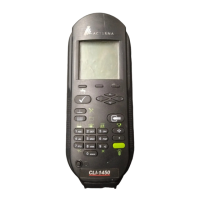~ Other Hardware Problems
Expansion and drop loops are common
problems in older cable systems, espe-
cially with a 0.412 (inches) cable.
Repeated seasonal expansion and con-
traction eventually causes the cable to
crack at the flex points. If a crack is
found in the cable, splice out the dam-
aged section of cable and check to see
if the problem is corrected. If the prob-
lem persists, it may be necessary to
replace the entire span; otherwise the
existing cable span will cause on-going
problems and cable system costs.
Water damage to equipment occurs
when a poor seal is made between the
housing and its cover or lid. Water
will travel via the center conductor
into cable. Over a period of time,
water can collect inside the housing,
eventually causing corrosion and
component failure Poor seals of lids
also cause some egress. This is why
good lid seals have both rubber and
braided bonds to prevent leakage.
2-8
~ Troubleshooting the Cable
System
A leak source that exceeds the legal
limit of 20 µV/m should be recorded
and reported as soon as it is discov-
ered. Cable leakage that exceeds this
legal limit must be repaired as soon
as possible. If a leakage is discovered
at 50 µV/m or higher, it should be
reported; repaired as soon as possi-
ble; and must be officially logged for
FCC compliance.
Note: Always check
and follow the specific policies
required by your cable system.
When evaluating a cable leak source,
moving or shaking the leak source can
change the leakage level and may
even eliminate it temporarily. This is
a very good method to find out if this
is a leak or very near the source of the
leakage. Many intermittent leaks may
be found when the wind is strong
enough to move the cable.
For most leaks at fittings, repair gen-
erally involves finding the defective
component and then tightening it or
replacing it with a new fitting that is
well prepared and sound. After a leak
source is repaired, be sure to do a fol-
low-up check of your work. Use a
meter to confirm that the leak you
repaired is no longer a problem and
that the leak repaired was the actual
leakage source. If the leakage signal
persists, as a result of your follow-up
check, there may be additional leak-
age sources in the area or there is
another leak at the same source that
was masked by the fixed leak.

